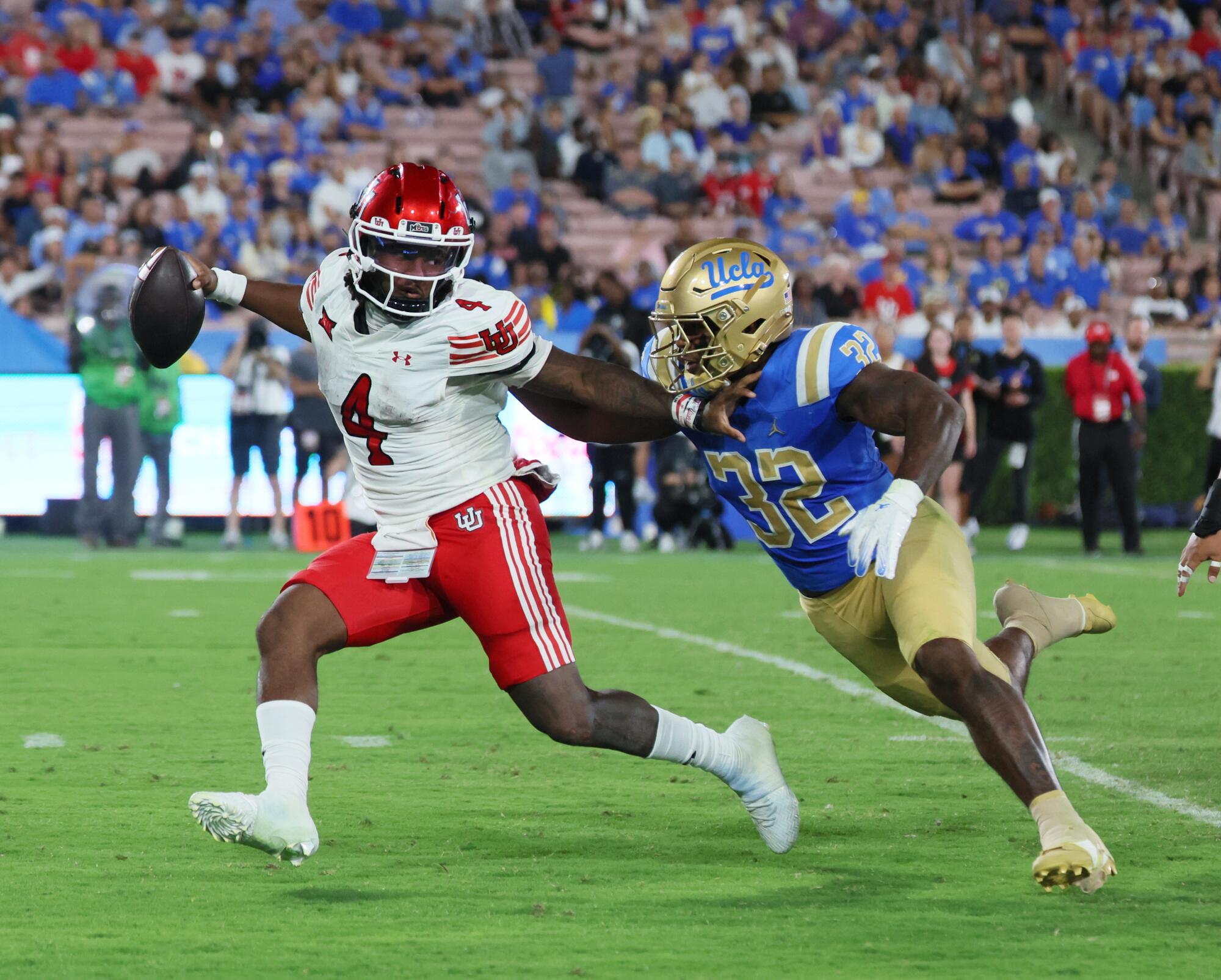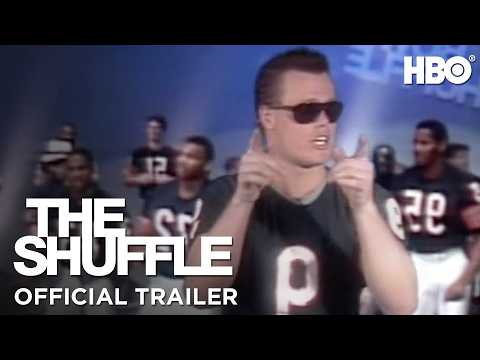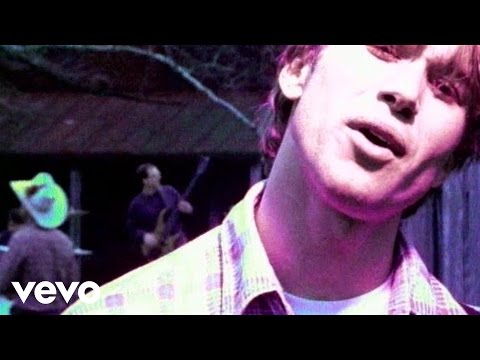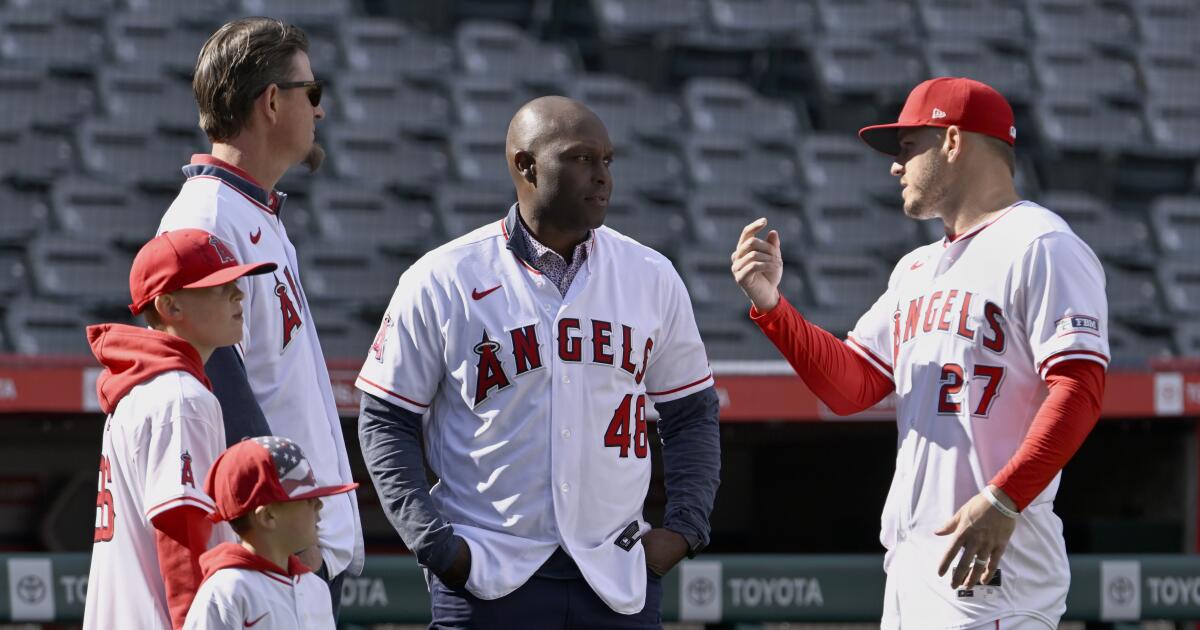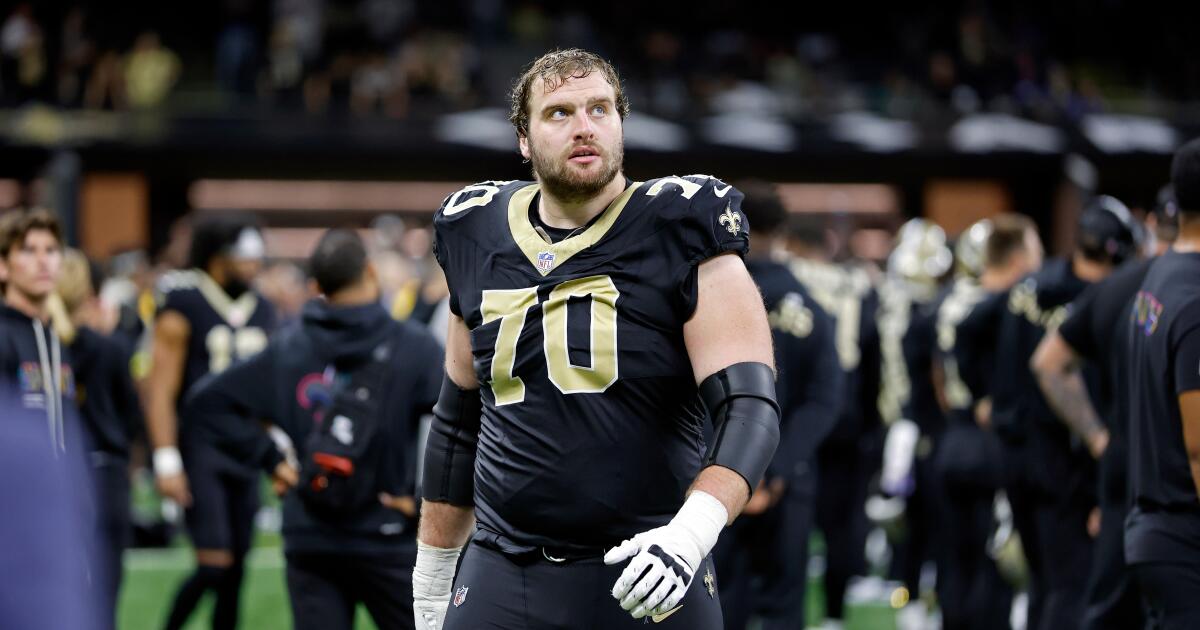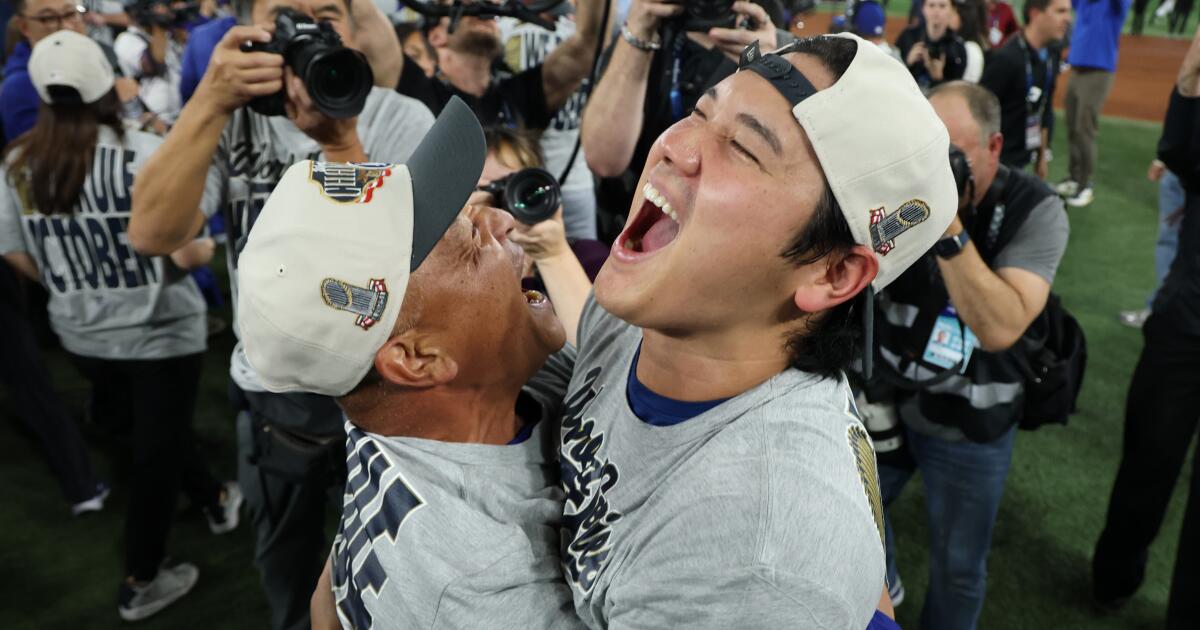What’s in a rivalry? UCLA newcomers now know after watching video
Red Sanders, the legendary UCLA football coach, once said the rivalry with USC wasn’t life or death, it was more important than that.
Now, some 70 years later, almost half the Bruins roster needed a primer on what it means to play the Trojans.
“We have so many transfers and things,” interim coach Tim Skipper said, “so I wanted to make sure everybody knew how significant this game was.”
That could make Ciaran Dooley, the team’s creative content producer, a rivalry hero rivaling John Barnes, Anthony Barr and Dorian Thompson-Robinson. Dooley produced a video that tried to pack the essence of a nearly century-old rivalry into about five minutes.
Putting aside any worries about where college sports are headed when one needs to explain anything about his biggest rival, the video had its intended effect, sparking cheers nearly a week before kickoff.
Starting with a minutelong hype reel narrated by Barr, the video explained some of the rivalry basics, such as both teams wearing their home uniforms and the winner getting to take possession of the 295-pound Victory Bell before painting it in their primary school color — preferably blue.
“A lot of it was like clips I’ve already seen being from L.A. and around the game,” freshman linebacker Scott Taylor said, “but a lot of the guys who haven’t been here don’t understand how big a deal this is to L.A. and how special this win can be.”
Rivalry lexicon such as “It’s always 8:47 in Westwood” — a reference to the Bruins’ 13-9 upset of No. 2 USC in 2006 — and “Eight more years!” — a chant that broke out at the Rose Bowl in 1998 at the end of the Bruins’ eighth consecutive victory over the Trojans — might need some explaining to a roster that includes 57 newcomers, 52 transfers and 42 players from out of state.
“I made this video to show what the rivalry is really about — the history, the passion, the bragging rights,” Dooley told The Times. “I know everyone on the team already knows what it is, but if there’s anything that I can do to motivate the guys just that much more for the game, I’m going to do it every time.”
Linebacker Isaiah Chisom, a transfer from Oregon State, said the coaching staff also brought in several former players to explain the significance of the rivalry before the Bruins (3-8 overall, 3-5 Big Ten) face the No. 17 Trojans (8-3, 6-2) on Saturday afternoon at the Coliseum. Veteran offensive lineman Garrett DiGiorgio and defensive back Cole Martin also talked about what the rivalry meant to them.

Utah quarterback Devon Dampier (4) holds the ball and pushes Bruins linebacker Isaiah Chisom (32) on Aug. 30 at the Rose Bowl.
(Allen J. Schaben/Los Angeles Times)
“I think they’ve done a pretty good job at kind of bringing everybody together,” Chisom said, “so we all know how important this game is.”
Chisom didn’t need a refresher, having grown up in Southern California and played for Bishop Allemany High and Chaminade College Prep. He said he’s already attended a rivalry game and learned about the Bruins’ hatred for the Trojans from Chaminade assistant coach Reggie Carter, a former Bruins linebacker.
“He didn’t like anybody wearing any red,” Chisom said of Carter. “It’s been something I’ve been told for a long time.”
Skipper said he grew up watching the rivalry no matter where he lived — his father, Jim, was a coaching lifer who moved from one city to another and his older brother, Kelly, was DeShaun Foster’s running backs coach at UCLA.
“It’s awesome to finally be part of this thing,” Tim Skipper said. “You watch it so much, I’ve never been to one of these games, and to be able to work it and coach it is going to be awesome.”
Signs of rivalry week have greeted anyone who walked past the boarded-up John Wooden and bear statues on campus, though it’s been a little quieter than the Bruins would have preferred. That’s because they haven’t been able to ring the Victory Bell that’s residing across town after USC won last year’s game, 19-13, at the Rose Bowl.
“We want to get it back, we want to ring it after the game,” DiGiorgio said. “The [USC] guys, they planted flags on our field last year. I don’t know if we’re going to reciprocate that energy because I don’t know if that’s going to start anything, but we’re definitely looking forward to getting that bell back.”
The Bruins have won their last two trips to the Coliseum, giving DiGiorgio motivation to make it three in a row and end his college career 3-2 against the Trojans. There was a consensus at the team meeting Sunday that a victory over USC would make up for all the frustrations the team has endured during a season in which Foster was fired after only three games.

UCLA offensive lineman Garrett DiGiorgio (72) is confident a video the Bruins’ staff produced helped his teammates understand the importance of winning the USC rivalry game.
(John McCoy / Associated Press)
“Beating ‘SC would undo every wrong that has happened this season — that and the Penn State win [over the then-No. 7 Nittany Lions],” Chisom said. “I don’t think we could ask for anything more.”
Even those making their rivalry debut will know what they’re getting into thanks to the handiwork of a content creator whose video might help produce an upset.
“I believe that it enlightened, lit a fire under the guys,” DiGiorgio said, “to be a little excited for this week.”
